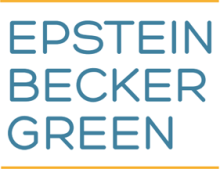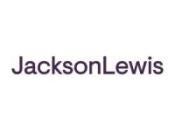Over the past week the U.S. Court of Appeals for the District of Columbia Circuit weighed in on two separate related efforts by the Obama-Board to expand the protections of the National Labor Relations Act (the “Act”) to workers who are not in traditional employer-employee relationships.
One Court – Two Cases
In a March 3, 2017 decision, the Court rejected the National Labor Relations Board’s (“NLRB”) finding that FedEx Home Delivery drivers were employees and agreed with the company that the drivers were independent contractors and therefore did not have the right to union representation under the Act. On March 9th, the Court heard the much anticipated argument on the challenge by Browning –Ferris Industries of California Inc., to the Board’s 2015 decision adopting a new and much looser standard for determining joint employer status. While it is not certain when the Court’s decision will be released, the questions asked by the judges who heard the appeal suggested that they are by no means convinced that the new test articulated in Browning-Ferris is the correct one and consistent with what Congress intended when it passed the Act.
The Court Found FedEx Ground Drivers Are Independent Contractors, Not Employees
A key question in the gig economy is the relationship between a worker and the company for whom they provide services. Those workers who are employees under the Act have the right to join and be represented by unions; independent contractors do not. The NLRB has gone so far in its efforts as to hold that misclassification of a worker the Board considers to be an independent contractor commits an unfair labor practice when it does so. The Board has also argued before the Courts that its views on whether a worker is an employee or an independent contractor should be afforded deference by the Courts.
The D.C. Circuit’s decision in the FedEx case is of particular interest with regard to each of these propositions. First, the Court noted that under the Supreme Court’s 1968 decision in NLRB v. United Insurance Company of America, the “determination of whether a worker is a statutorily protected ‘employee’ or a statutorily exempt ‘independent contractor’ is governed by common law” and “there is no shorthand formula or magic phrase that can be applied to find the answer.” Thus, while the Board argued that the Court should afford great weight to its application and analysis of the common law test for determining whether the drivers were employees or independent contractors, because the question is “a question of pure common law agency principles ‘involv[ing] no special administrative expertise that a court does not possess,” the Court found that deference to the Board’s views was neither appropriate nor required.
The Court in its analysis and application of the common law test found that the NLRB was wrong to place greater weight on certain factors than others. Because the facts in the FedEx case were virtually identical to an earlier case the Court had considered with the same parties in 2009, the Court held the Board was not entitled to the deference that would be due “between two fairly conflicting view,” because the Court had previously considered and decided the issue.
The Board’s Browning-Ferris Joint Employer Test
The Board’s 2015 Browning-Ferris decision held that an employer could be deemed a joint-employer of another employer’s employees if it was found to exercises or even just has the right to exercise “indirect control” over the other employer’s employees. The D.C. Circuit heard argument on March 9th on the company’s challenge to this standard. While it is too early to say whether the Court will defer to the Board in this case, the Court’s questions suggested that it at least has doubt as to the Board’s new standard. For example, Judge Patricia Millet questioned the practicality and future application of the indirect control standard, asking the Board’s attorney “What assurance do we have that this test and particularly indirect control is going to continue to police the line properly between genuine joint employers and [contractors]?
As in the FedEx decision, the application of the common law standards was before the Court, this time in connection with the common law test for determining the existence of an employer-employee relationship, which is one of the requirements of the Browning-Ferris standard. Counsel for Browning-Ferris argued that “the notion of exertion control dovetails with Congress’ understanding of the essence of a common-law employment relationship as direct supervision.” If the Court agrees with this proposition, then it would seem questionable that the Court will accept the Board’s view that possession, without exercise, of indirect control is sufficient to find a joint-employment relationship.
What Do These Cases Tell Us?
Since last November’s election, there has been a great deal written and said about what a Trump Labor Board will likely mean for the legacy of the Obama Board. However, in examining that legacy it is important not to lose sight of the fact that the Board’s decisions are not self-enforcing and are subject to review and enforcement by the Courts of Appeal. While the Board continues to follow its Doctrine of Non-Acquiescence, meaning it will not accept the holdings of any court other than the United States Supreme Court as binding upon it if it disagrees with the Court’s interpretation of or views concerning the application of the Act, the D.C. Circuit and other Courts have continued to take serious issue with the Board’s position.
It will be interesting to see, once a new Board with a majority of members appointed by the new President, not only how it addresses the myriad of representation and unfair labor practice precedents that are the product of the Obama Board, but also whether it continues to stand by the Doctrine of Non-Acquiescence and how this shapes its relationship with the judiciary.




 />i
/>i

